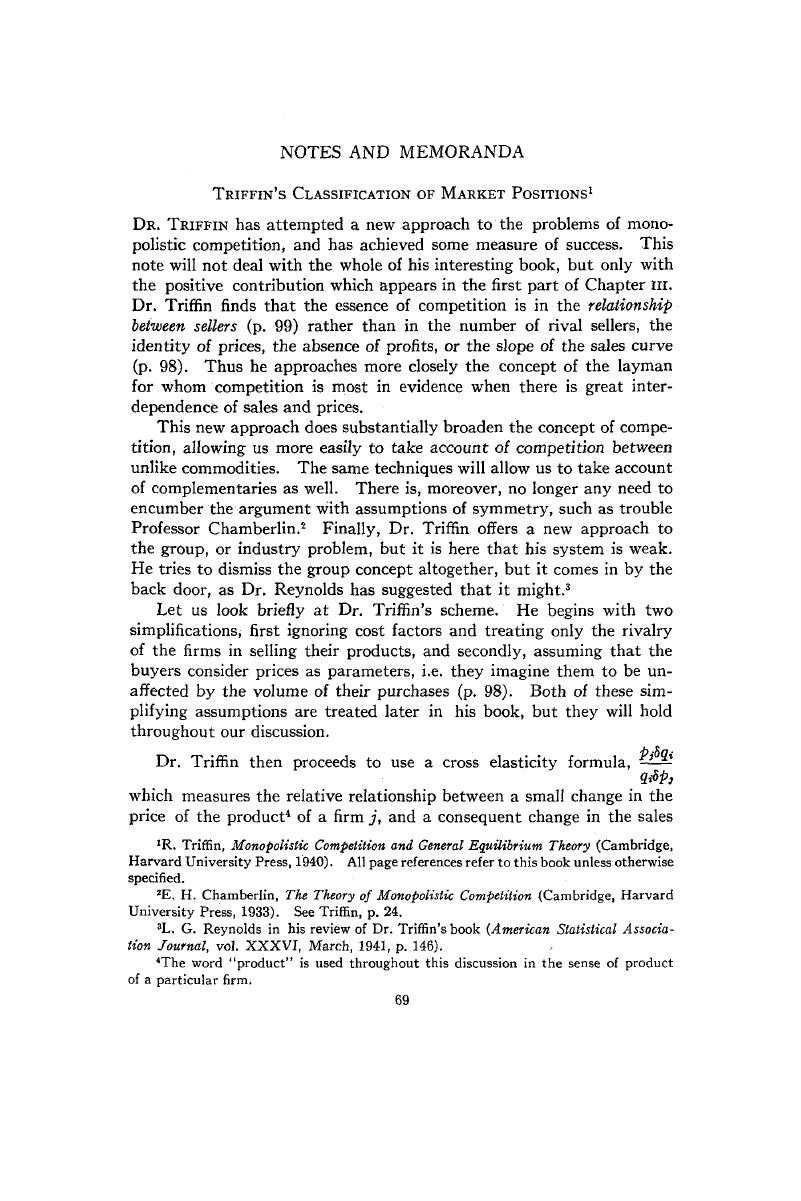Published online by Cambridge University Press: 07 November 2014

R. Triffin, Monopolistic Competition and General Equilibrium Theory (Cambridge, Harvard University Press, 1940). All page references refer to this book unless otherwise specified.
2 Chamberlin, E. H., The Theory of Monopolistic Competition (Cambridge, Harvard University Press, 1933).Google Scholar See Triffin, p. 24.
3 Reynolds, L. G. in his review of Dr. Triffin's book (American Statistical Association Journal, vol. XXXVI, March, 1941, p. 146)CrossRefGoogle Scholar.
4 The word “product” is used throughout this discussion in the sense of product of a particular firm.
5
This cross elasticity formula ![]() might be better understood by some people if it were written as
might be better understood by some people if it were written as ![]() because it then becomes more clear that we are here dealing with relative changes—that is, changes in price relative to the price from which we start, and changes in quantity relative to the quantity from which we start. The usefulness of the elasticity formula may be compared to that of the simpler formula δq
i
/δp
j
which measures slope, along somewhat the same lines, as the usefulness of semi-logarithmic graph paper to that of simple arithmetic graph papers. The symbol S is used because there are more than two variables, the others being held constant. The use of the derivative symbol in both formulas implies infinitely small changes as against finite changes which would be represented by
because it then becomes more clear that we are here dealing with relative changes—that is, changes in price relative to the price from which we start, and changes in quantity relative to the quantity from which we start. The usefulness of the elasticity formula may be compared to that of the simpler formula δq
i
/δp
j
which measures slope, along somewhat the same lines, as the usefulness of semi-logarithmic graph paper to that of simple arithmetic graph papers. The symbol S is used because there are more than two variables, the others being held constant. The use of the derivative symbol in both formulas implies infinitely small changes as against finite changes which would be represented by
It is really finite changes that Dr. Weintraub is considering, and he should use the expression Δq/q rather than δq/q. See especially page 668 of his article “The Classification of Market Positions: Comment” ( Quarterly Journal of Economics, vol. LVI, Aug., 1942 Google Scholar).
6 The direction indicated above is the reverse of that suggested by Dr. Weintraub. It is better to call firm i the “isolated seller,” and to give firm j another name such as “isolated price mover.”
7 In his reply to Dr. Weintraub's comment, noted in footnote 5, given in the same issue, p. 673.
8 Weintraub, “The Classification of Market Positions,” pp. 666-7. It is not true that Dr. Triffin's two elasticity formulas will give values that are reciprocals of each other. If the relationship between p j and q i is simple, this may be true, but it need not be true.